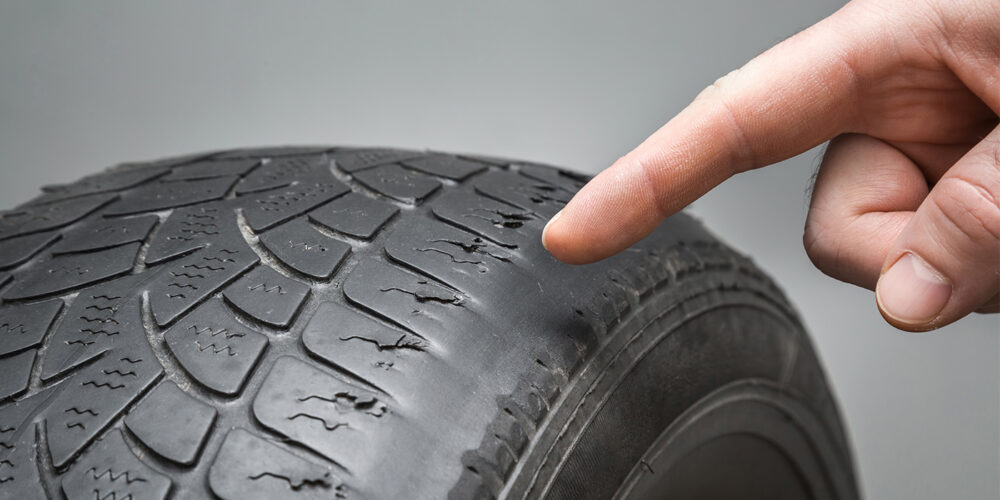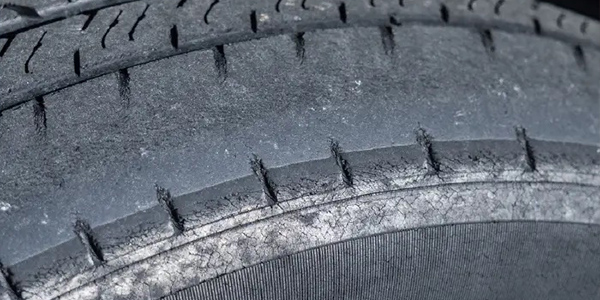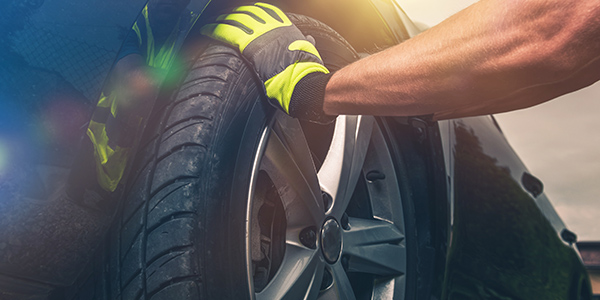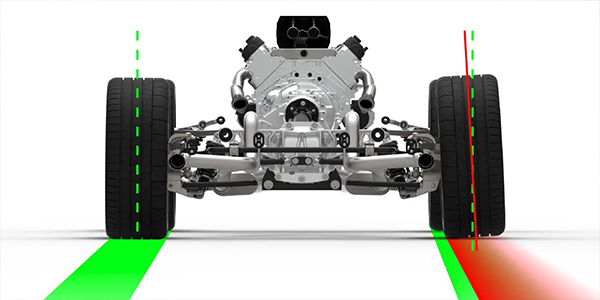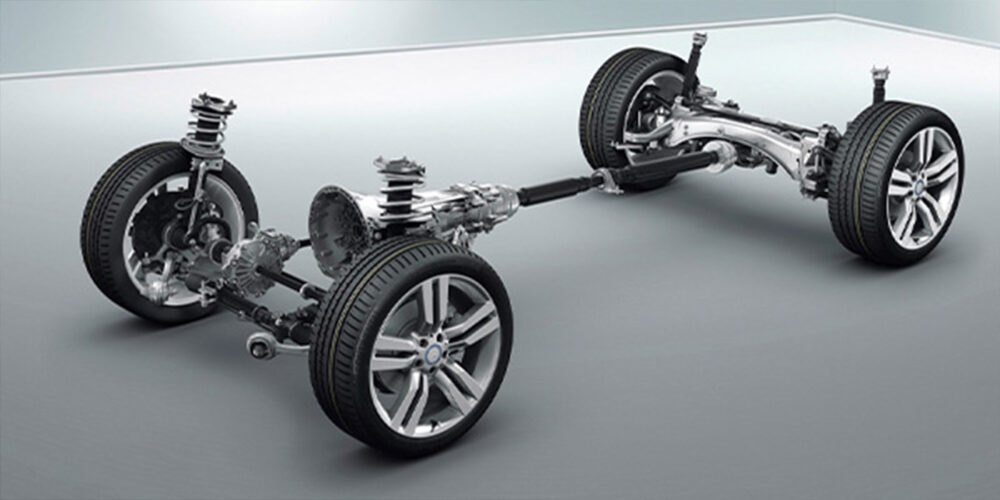Tire wear patterns are visual representations of how the vehicle is performing and how owners maintain their vehicles. Tread patterns reveal the condition of alignment angles, suspension components and ride control components. Learning how to read the tire and communicate your findings to your customers is the key to selling ride control.
What is tire wear? The perfectly worn tire would have a perfect contact patch with the weight evenly distributed shoulder to shoulder. But, to get ideal tire wear, its toe, camber and caster angles would never change. In the real world, a tire must go around corners and deal with uneven road surfaces. The suspension and ride control system must strike a balance between handling and comfort. Engineers can design the suspension so the geometry minimizes uneven wear, but they can’t design for worn components.
Therefore, a tire’s contact patch is controlled by the geometry of the suspension. The movement of the body and suspension is controlled by the shocks, struts and springs. If the ride control can’t control the movement or body or suspension, the tires will suffer.
The geometry and pickup points of a suspension change in relation to the road as the vehicle’s pitch and yaw change. Also, angles like caster, camber and toe influence each other as the driver turns the steering wheel. Another factor is flex, or compliance, in the suspension and steering system. If a bushing is soft, it will compress and effectively change the suspension pickup point.
If you get a customer in your shop who is looking for new tires because the old set is worn out, check the set of tires for the below conditions to determine if they also need new shocks, struts or springs.
Inner Edge Wear
Alignment
Ride height
Leaking air ride
Worn springs
Worn ride control
The shoulder of a passenger car tire is designed to hold up to a lot of abuse. But, the shoulders are the first area to wear if there is an issue with how the tire makes contact with the road.
Inner-edge wear is typically related to negative camber and the wheels being toed out. Camber and toe change with the vertical movement of the suspension and the movement of the body. This helps improve traction when the vehicle is cornering.
If a vehicle has weak springs and can’t keep the vehicle at the proper ride height, negative camber and a toed out suspension angle can occur.
Outer Edge Wear
Weak or worn ride control
Alignment issues
Broken sway bar links
If the outer edge of the tire is worn, it is a sign that the sway bars, springs and dampeners can’t control the movement of the body. When a vehicle goes into a turn, the body can lean. It can be worse on vehicles with a high center of gravity like crossovers, SUVs and pickup trucks.
When the body of a car or truck leans, it can induce positive camber on the outside wheel. Positive camber and the transferred weight scrub the outer edge of the tire.
Both Edges
Low tire inflation (Check TPMS)
Weak ride control
Broken sway bar links
Ride height
If the shocks, struts and springs are so far gone, the body will sway more than usual going around a corner. The body lean will cause enough positive and negative camber to wear the edges of the tires. The other problem could be the sway bar and the links. In some cases, it might just be a lack of rotation.
Tire Feathering
Ride height
Worn springs
Poor alignment
The indicator of excessive positive or negative toe angle is a tire feathering or scuffing that can be detected by stroking your fingertips across the edge of each tread bar or block. A feather edge on the inside of the tread bar indicates excess toe-in, while a feather edge on the outside indicates toe-out. Because toe angle is affected by changes in camber and caster angles, it’s always the last angle to be adjusted during the wheel alignment process. In addition, any change in camber or caster angles will immediately change the toe angle. Toe angle geometry can also be greatly affected by changes in suspension height, like an uncalibrated air ride system.
Scalloped Tires
Worn ride control
Lack of rotation
Cupped or scalloped dips appearing around the surface of the tire tread could indicate loose, worn or bent suspension parts. Worn shock absorbers or unbalanced tires can also cause cupping, but the cupping would typically be more indicative of a concentric pattern. Shocks and struts are the most likely culprit because they provide dampening force to control tire movement. When the tires move excessively, the scalloped pattern can appear. A lack of rotation can cause this type of condition on the rear tires.
Spring and Tire Health
The health of a spring determines the health of the tire. A little bit of life is taken out of a spring when it is compressed and the energy is released. It’s not the amount of travel that matters, but the frequency of the cycles. Over the years, the flexing and frequency will cause fatigue that can be measured in a loss of ride height that can cripple the alignment angles.
But, some springs can fatigue and still not have a significant loss of ride height. These springs can have a progressive design and use coil geometry to give a smooth ride in a straight line, but become stiffer as the body and chassis start to transfer weight. The only way to inspect these types of springs is with a test drive and visual inspection of the spring and tires.
Shock and Strut Wear
Over time, shocks can lose this charge of gas. The gas prevents foaming of the oil in the shock or strut. When this happens, the shocks can overheat and fade. In this state, the shock or strut can’t control the suspension and body, this leads to abnormal tire wear.
The gas leaks out because the seals for the gas chamber wear out and leak, or the “pillow” filled with nitrogen ruptures. Gas can escape out of the seals around the rod easier than oil.

